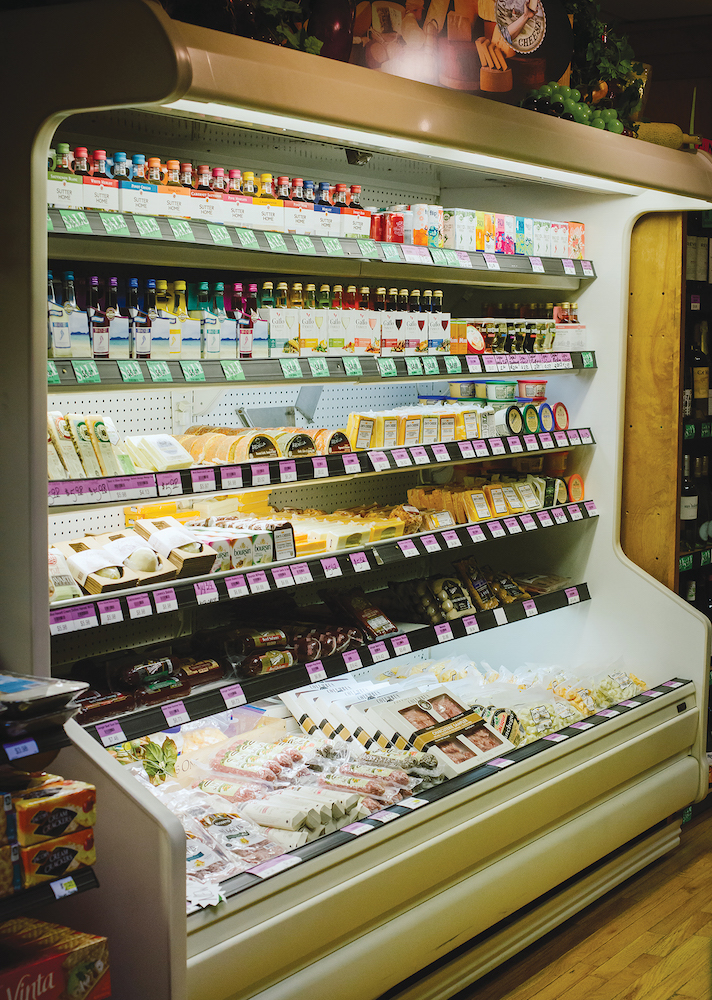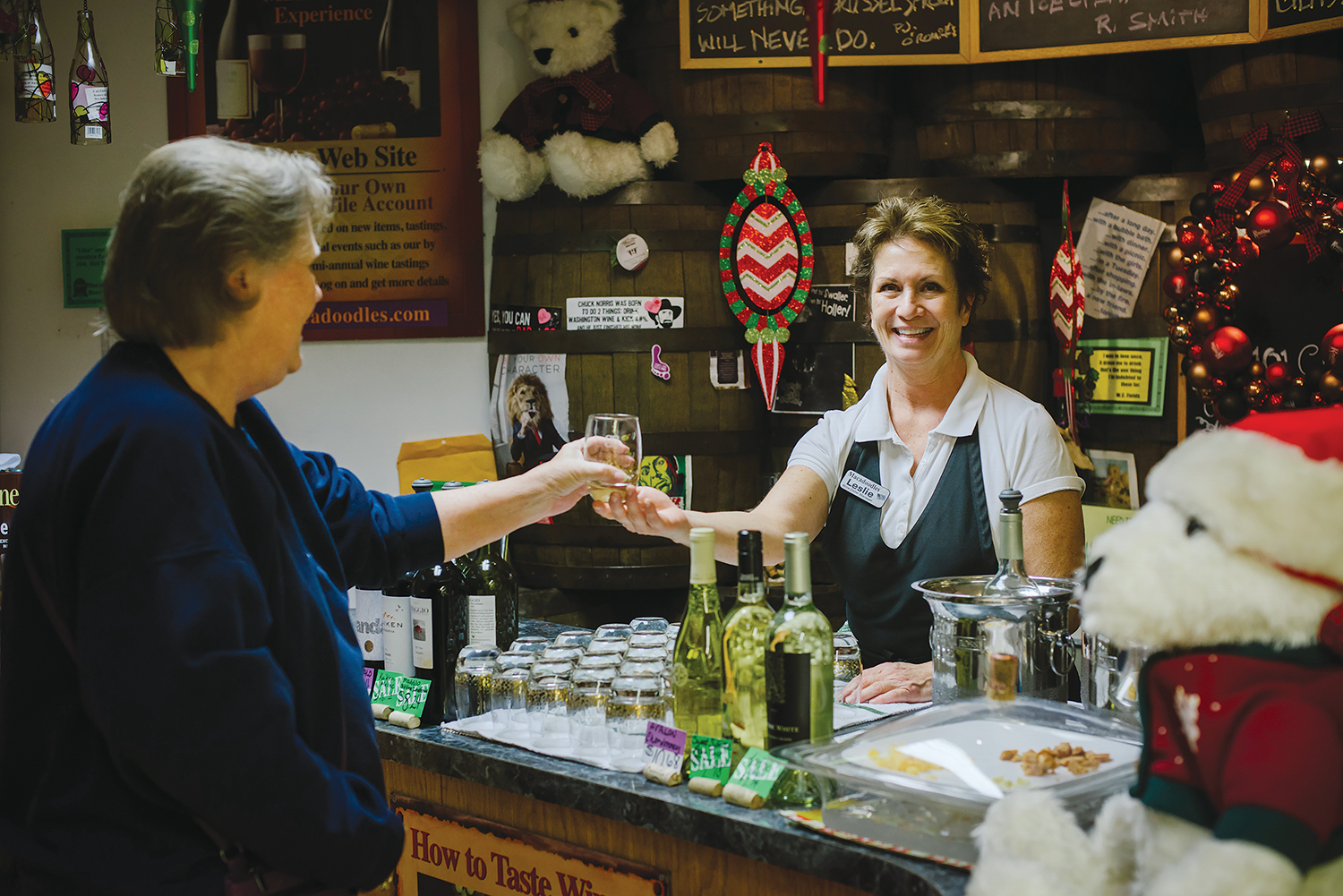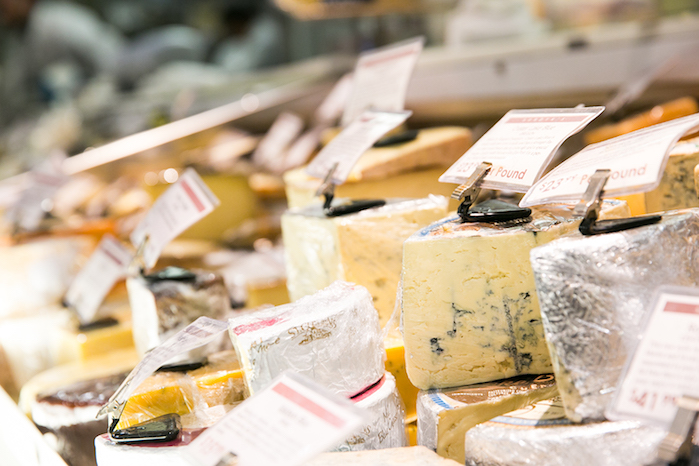While they may not take up a significant portion of your store, non-alcoholic complementary products still matter to customers and your bottom line.
Chips, candy, meats, soda, juices, mixers, cheeses: these and other items all pair naturally with whatever beer, spirits or wine a customer has come to buy. Often it’s a matter of convenience. Party-hosts can buy beer and snacks at the same time.
Non-alcohol items tend not to overwhelm your SKUs. Typically they take up about 5% of a retailer’s floor space, grouped mostly together in one section of the store. That’s not a lot of room to attract eyeballs. How can you maximize the potential of this small portion of your stock?
Savvy marketing and product selection can increase the odds that consumers add complementary items to their purchase. And regular sampling remains a tried-and-true strategy to generate sales.
Selecting the Right Stock

The current rise in popularity of craft and local products has altered the alcohol industry. Owners and managers should look for similarly attractive qualities in their complementary products.
Surdyk’s Liquor & Cheese Shop in Minneapolis includes a whole deli, so the alcohol side does not sell a lot of non-alcoholic food and drinks. But it sells cocktail mixers, and manager Jim Larson has seen a major shift in the offerings there.
“When I started in this role five years ago it was basically just big jugs of neon-yellow stuff for mixers,” he recalls. “We’ve really reoriented our selection of mixers to smaller-format, higher-quality products. So many craft mixers that have come online recently have helped reorient the category towards local, healthier products.”
“It’s really worked out well,” he adds. “Our revenue in that product area is up.”
Operating in a city gives Larson access to the burgeoning craft scene in and around Minneapolis. He takes full advantage when selecting stock. “In the city there are eight-to-ten local shrub-makers, and we carry three of the full lines,” he says.
Most new items Larson has added recently have been Minnesota-made. One downside with that strategy is that, compared with the big established brands, the product prices trend a bit higher. And when they cost $1-$3 more than the nationally distributed alternatives, they have to offer an appealing differentiator.
Thankfully, the craft movement plays right into this. “People today tend to value bold flavors and well-crafted products,” Larson says. “I don’t see many younger people buying the cheaper stuff anymore. Baby boomers, too.”
“If I put a Minnesota-made tag on a product, it really helps it sell,” he adds.
“Craft” usually also means healthier, which is what today’s consumers prefer. “We carry a lot of fresh-pressed juices and carrot juices,” says Mike Canan, GM of Oliver T’s Market in Grand Blanc, Michigan. “Gluten-free has become a big category as well.”
Uniqueness is also critical for complementary items, agrees Leslie Santa Maria, wine manager at Macadoodles in Pineville, MO. “We like to find specialty items at fair pricing,” she says. “We try to offer things other than what you can find any day at the big box stores.”
For example, she points to Dot’s Pretzels. These specialty snacks cost $5 a bag — more expensive than typical pretzels. Yet, “we order five to six cases per week,” Santa Maria says.
The secret to this success? Santa Maria suspects it has something to do with the signage they put out in the store by where they stock Dot’s Pretzels. The advertisement reads, “If you can find a better pretzel, we’ll buy it for you.”
Curiosity piqued, customers have tried the pricier pretzels. Results speak for themselves. “It’s amazing how fast sales have taken off for those,” she says.
Sample, Sample, Sample
Marketing for non-alcohol products is obviously not a high priority compared with what comprises the vast majority of your store’s SKUs. Fliers, storefront signage and social media are all likely better used for alcoholic products.
Perhaps an e-blast here and there, or half a page of a sales catalog, could let customers know about snacks and sodas, mixers and juices. But unless you run a full meat and cheese section, marketing won’t highlight non-alcoholic items as much.
That means that sampling is important for these products.
Every day the Macadoodles’ Pineville location puts out crackers at its wine-tasting bar, Santa Maria says, where store staff can explain what makes those products unique and tasty.
On the weekends the store will sample cheeses at the bar, teaching consumers how to pair these products with the wines for sale. Macadoodles carries the Savory brand of party cracker seasonings, which it will have out for sampling all the time.
“We try to do a lot of tastings, because tastings drive sales,” Santa Maria adds.
Of course, there is an additional benefit to holding regular tastings for complementary items. Unlike wine or spirits, food products can have shorter shelf lives. Sampling allows a store to taste customers on items that are approaching their expiration date. “You always want items to come in and go out,” she says.

Picking Distributors
As with selecting distributors or suppliers for beverage alcohol products, you want to pick the right partners who will work with you on sales. Often this means that they come in to lead tastings or product demonstrations.
“We’re looking for suppliers that do support,” Santa Maria says. This can be one of the advantages to working with smaller, local craft producers.
“A lot of the local, smaller producers are running their businesses out of a small space and a small kitchen, and will do their own distribution,” Larson says. “They’re more than happy to come in and mix up cocktails for us. We do something like that every other weekend.”
Also important is identifying distributors and suppliers who offer the mix of unique items that are not easy to find at supermarkets or big box retailers.
“I look for selectability,” Larson says. “I’ve developed a good relationship with one distributor who’s based in the Twin Cities. They’ve refocused their business to focus on a mix of quality craft items. They’ve helped me bring in some craft items from outside Minnesota that are well received here, like Jack Rudy or BG Reynolds.”
“I also look for a distributor who is willing to work with me on quantity,” he adds.
Positioning and Packaging
While most non-alcoholic products tend to be stocked in general product areas, there are opportunities for synergies in other areas of the store.
Santa Maria will place ginger beer in the vodka section to promote Moscow Mules. Appropriate glassware can also be found in aisles for those products: wine glasses with wine, beer glasses with beers, etc.
She also believes that non-alcohol items are a natural addition to holiday and seasonally themed displays. For instance, Santa Maria will put up a margarita display in spring, around Cinco De Mayo. This allows her to simultaneously market and sell margarita mixes, glasses, sombreros, bead necklaces, etc.
Sales promotions can work in the same way. Larson of Surdyk’s Liquor & Cheese Shop will offer discounts on premium club sodas and tonics for customers who buy vodka. He will also package these products, and local craft syrups and shrubs, with vodkas and gins. “That seems to work well,” he says.
Kyle Swartz is managing editor of Beverage Dynamics magazine. Reach him at kswartz@epgmediallc.com or on Twitter @kswartzz. Read his recent piece What Bully Boy Distillers Sees as the Future of Craft Spirits.







oops – you’ve committed one of the more common grammar mistakes: complimentary vs. complementary
Complimentary: how informative the article is
Complementary: how things go well together.
from a former language teacher – – this is one of my pet peeves
Whoops, our mistake. Thanks for the heads up. We’ve made the correction.
You are absolutely right. In it something is and it is excellent idea. It is ready to support you.